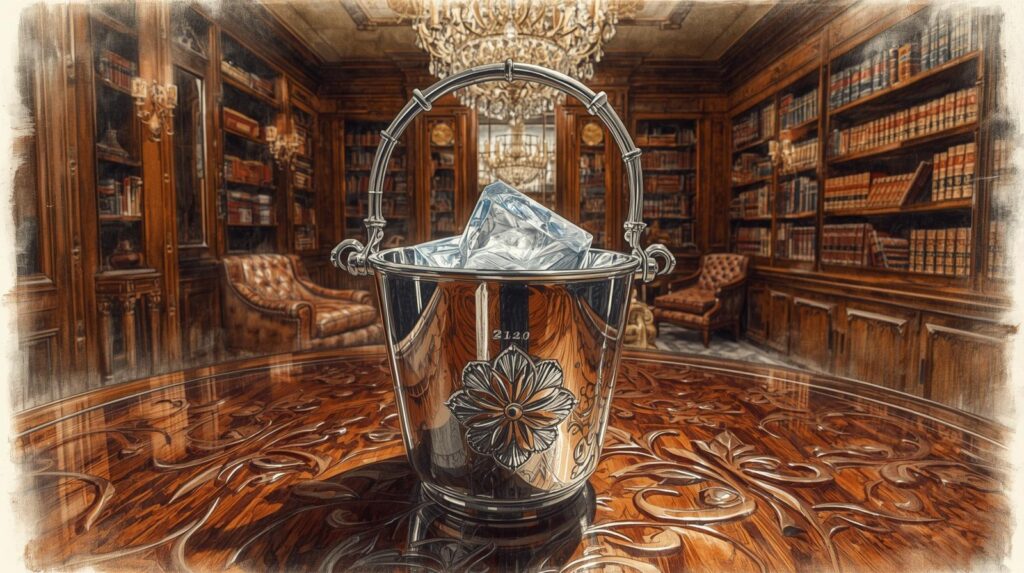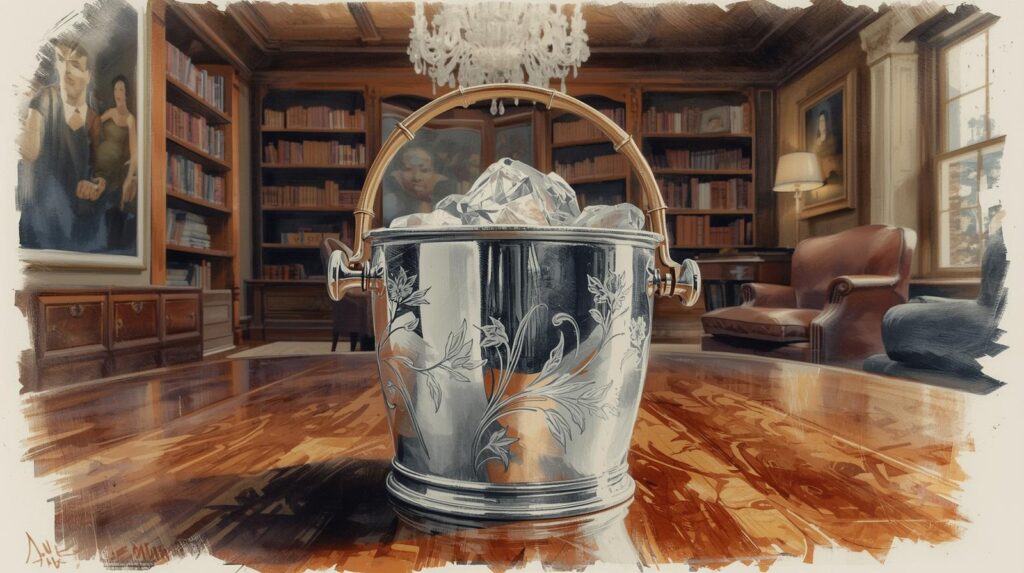Picture this: the sun’s beating down on your backyard barbecue, laughter’s echoing, and suddenly you realize—your trusty ice bucket is nowhere to be found. Warm drinks threaten to crash the party, and you’re left eyeing every container in sight, wondering if anything can save the day.
You’re not alone in this scramble. Sometimes the best solutions hide in plain sight, just waiting for a little creativity. If you’ve ever faced this chilling dilemma, you’re about to discover some clever substitutes that’ll keep your drinks frosty and your gatherings cool—no fancy bucket required.
Creative Alternatives to an Ice Bucket
Sudden need for cold drinks meets no available ice bucket. You don’t lose momentum—instead, you get inventive with what’s around. Every home holds alternatives that chill bottles and cans fast.
Common Household Items
Plastic storage containers keep drinks icy. Fill a large one with ice or cold water for several six-packs, like you would with picnic leftovers. Bathroom sinks work for smaller events—plug the drain, add ice, and submerge cans for cold beverages in minutes. Laundry baskets, lined with a trash bag, become drink chillers for outdoor gatherings; You find these strong enough for a few wine bottles and a bag of ice. Trash cans, cleaned thoroughly, hold dozens of drinks at tailgates, as noted by Food & Wine’s summer party guides. Coolers—if you own one—double as the quickest backup, sealing cold inside for hours.

Bathtubs, in a pinch, serve large batches at big parties. Fill with ice runs from the kitchen freezer or bags from the store. Friends still talk about that July Fourth when all the sodas floated in the tub because no bucket showed up.
Kitchen Solutions
Mixing bowls, both metal and glass, chill single bottles or a couple cans. Salad spinners, filled with ice, cradled your guest’s favorite bubbly during last year’s potluck. Pots and stockpots—big enough for soup—fit several bottles, letting you tilt them against crushed ice. Baking sheets, surprisingly, work for quick chilling if you spread ice across them and turn bottles occasionally; This trick gets used when fridge space runs out. Pitchers, often overlooked, keep ice and a few drinks cold on small tables, and their handles make refilling simple.
Many kitchen substitutes out-perform buckets if you chill the containers themselves first. Test Your Kitchen’s advice: keep metal bowls in the freezer so they’re prepped for guests, and you won’t scramble if the ice bucket’s missing.
DIY Ice Bucket Ideas
DIY ice bucket ideas help you keep drinks cold when a standard ice bucket isn’t around. With items already in your home, you can repurpose containers or tap into insulated alternatives to chill beverages quickly and efficiently.
Upcycling Containers
Upcycling containers gives you immediate ice bucket substitutes from everyday household items. Plastic storage bins hold party drink cans easily, much like the ones used for holiday decorations or toy storage. Salad spinners or large mixing bowls deliver enough space for a handful of bottles—especially handy during small indoor get-togethers. Metal stockpots keep chilled water cold even longer, if you use them straight from the freezer. For outdoor parties, a clean trash can or laundry basket lined with a trash bag fits up to 30 beverage bottles, covering big group needs without hassle. Bathtubs serve as cold storage for dozens of drinks if you’re hosting an extra-large crowd.
Using Insulated Bags
Using insulated bags as chillers works well for portable events. Soft-sided coolers or reusable grocery bags with thermal linings trap the cold for hours—even after you add loose ice or frozen gel packs. Small insulated lunch bags cool down a few cans at a time, perfect for picnics in the park or short road trips. Backpack coolers combine capacity and convenience, letting you carry drinks hands-free while keeping them cold until you’re ready to serve. Freeze the bags themselves if possible, or add pre-chilled water bottles to boost chilling power.
If you experiment with these substitutions, you might discover that the best ice bucket for your event is the one you’ve just reinvented with resourcefulness and a little creativity.
Factors to Consider When Choosing an Alternative
When picking an ice bucket substitute for keeping drinks cold, focus on how well the item maintains chill and fits your party size. Select alternatives that match your cooling needs and gathering scale for best results.
Insulation and Temperature Control
Insulation determines how long drinks stay cold. Materials like thick plastic, metal, or insulated bags slow down melting, so bottles chill longer. Metal mixing bowls placed in the freezer store cold efficiently—Bartender Magazine highlights stainless steel’s quick cooling and thermal retention for beverage service. Insulated grocery bags, with thermal linings, work well for picnics since they prevent heat from entering.
Adding salt to ice in any container, a tip supported by the USDA, lowers the freezing point and chills drinks faster. Containers with lids trap cool air inside, improving temperature control. Consider options with tight-fitting covers when using mixing bowls or storage bins.
Size and Capacity
Capacity matters when multiple people or bulky bottles need chilling. For four-person gatherings, a medium-sized salad spinner fits six cans easily, while large backyard parties benefit from trash cans or bathtubs that can hold 24 or more beverages. Fewer guests mean kitchen pots or small coolers suffice.
Before filling a makeshift chiller, measure bottle height; champagne and liter bottles need deeper containers. Laundry baskets work for varied bottle shapes if lined with a leak-proof trash bag. Choose a capacity that avoids overcrowding—less crowded containers allow ice to surround each drink, maintaining consistent cooling.
Tips for Keeping Drinks Cold Without an Ice Bucket
Line containers with ice packs or frozen reusable gel packs to maintain a low temperature for your drinks. For instance, place a few gel packs at the bottom and along the sides of a storage bin or salad spinner, then layer your cans or bottles on top. Metal mixing bowls and thermal grocery bags hold cold air longer, especially when pre-chilled in the freezer for at least one hour.
Rotate drinks in and out of the fridge or a cooler if the event’s near your kitchen or indoor space. By swapping warm bottles for cold ones every 30 minutes, you keep the beverage selection consistently refreshing without relying on a single chilling method.
Salt the ice if using a container that can hold water. Mix in roughly half a cup of salt for every five pounds of ice—this simple science lowers the freezing point and speeds up cooling, as detailed by the University of Illinois (source).
Refill ice or cold packs periodically once condensation becomes noticeable. This signals that temperatures are rising—add more frozen packs when you see beads of water forming on bottles or plastic.

Wrap drinks in wet paper towels and freeze them for about 15 minutes before serving. This works well for individual cans, helping them chill quickly when you’re pressed for time.
Cluster drinks close together in the coldest part of your temporary chiller, such as a bathtub corner or laundry basket base. Tighter placement minimizes warm air pockets, making the cooling process more efficient.
Select shaded spots for your makeshift cooler if you’re outside. Direct sunlight counteracts your efforts—place bins under a tree, beneath a table, or beside a fence to slow melting and extend cold retention.
Monitor how many drinks you place per container. Overcrowding lowers efficiency. Two dozen 12-ounce bottles fit well in a standard kitchen sink when layered with ice and water, but more may lead to uneven chilling.
Use lids or clean towels to cover your substitute chiller and trap cool air inside. If you’re using a laundry basket or a large trash can, place a sheet or plastic cover over the top—this creates a quick, insulated barrier that keeps beverages cool for longer periods.
Conclusion
No ice bucket? No problem. With a little creativity and some resourcefulness, you can keep your drinks perfectly chilled and your guests happy at any gathering. Remember, the best solutions are often right at your fingertips, so don’t hesitate to experiment with what you have on hand.
Whether you’re hosting a backyard barbecue or a cozy indoor party, you’ve got plenty of options to keep the fun going and the drinks cold. Enjoy your next event without worrying about warm beverages—your newfound know-how will keep everyone refreshed.
